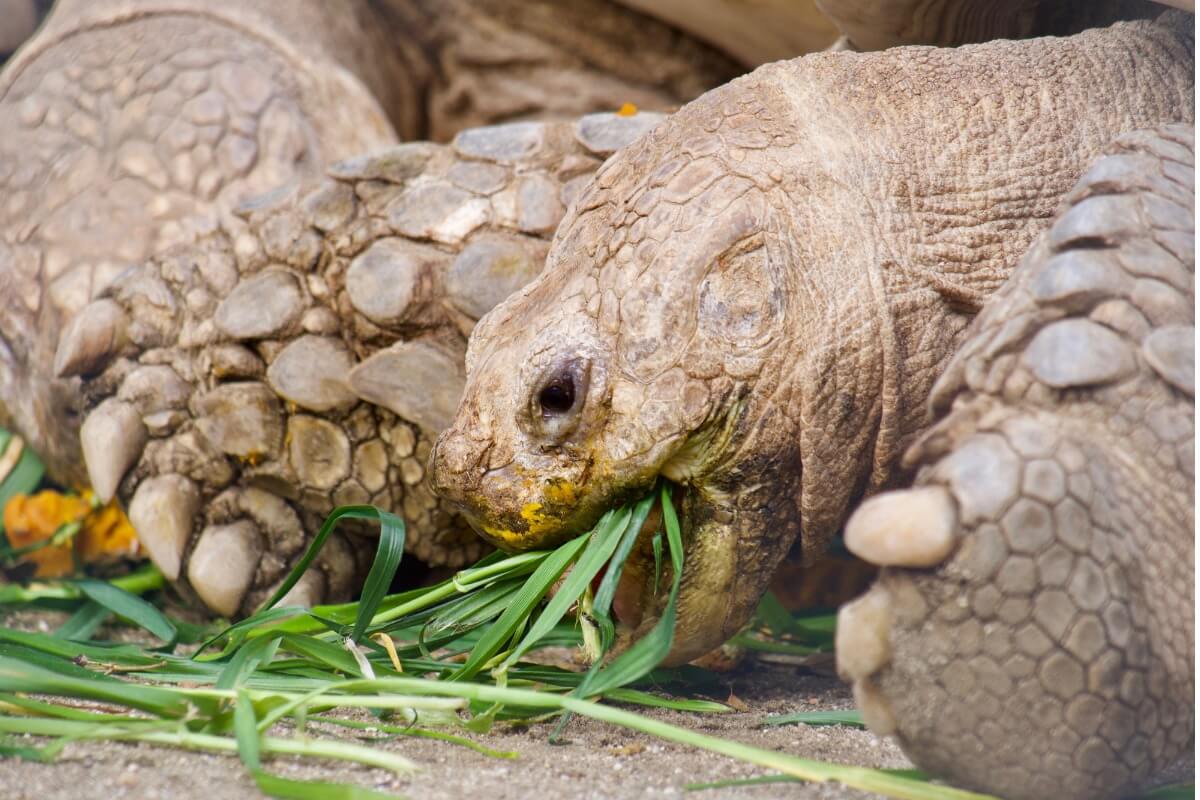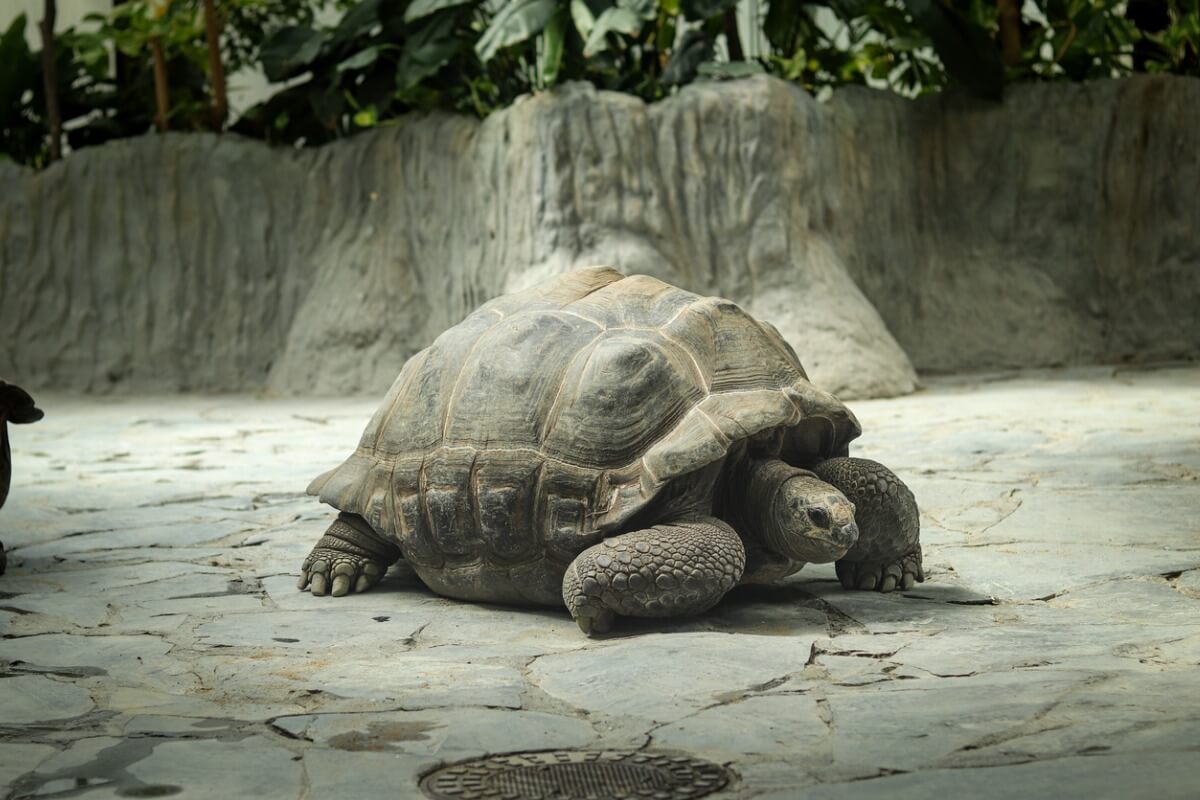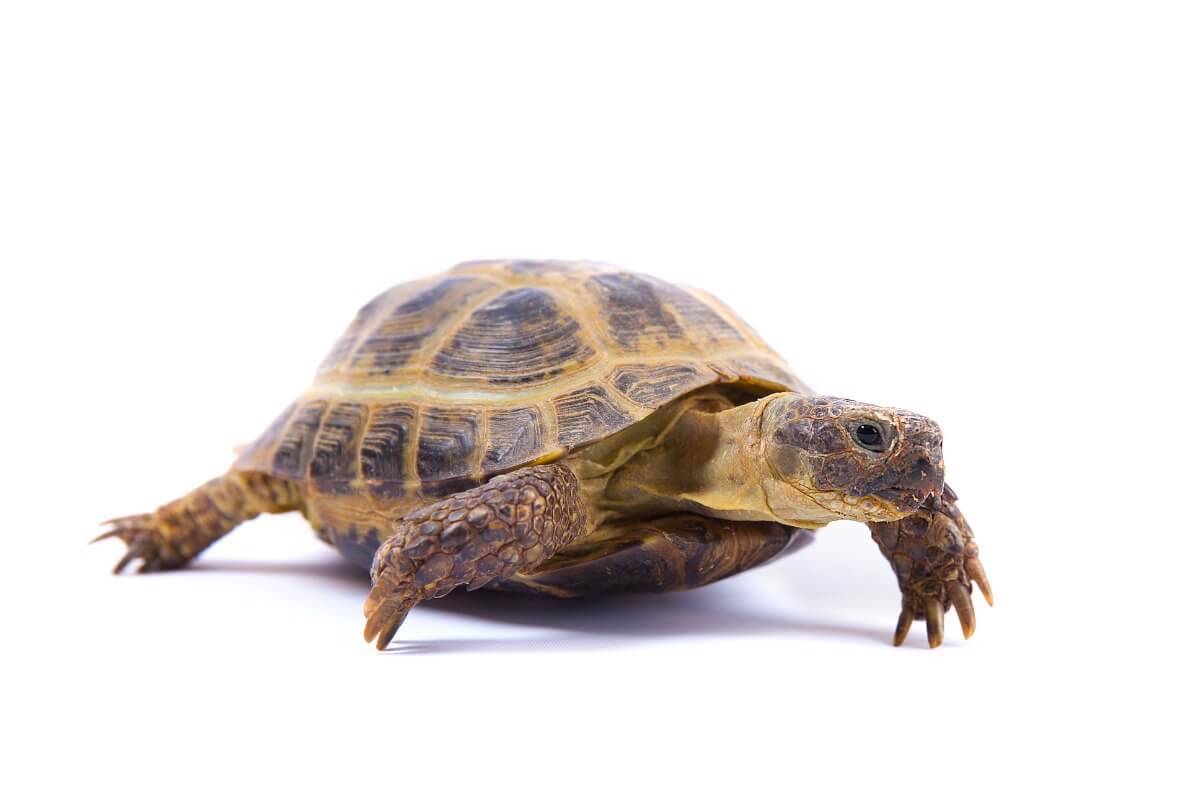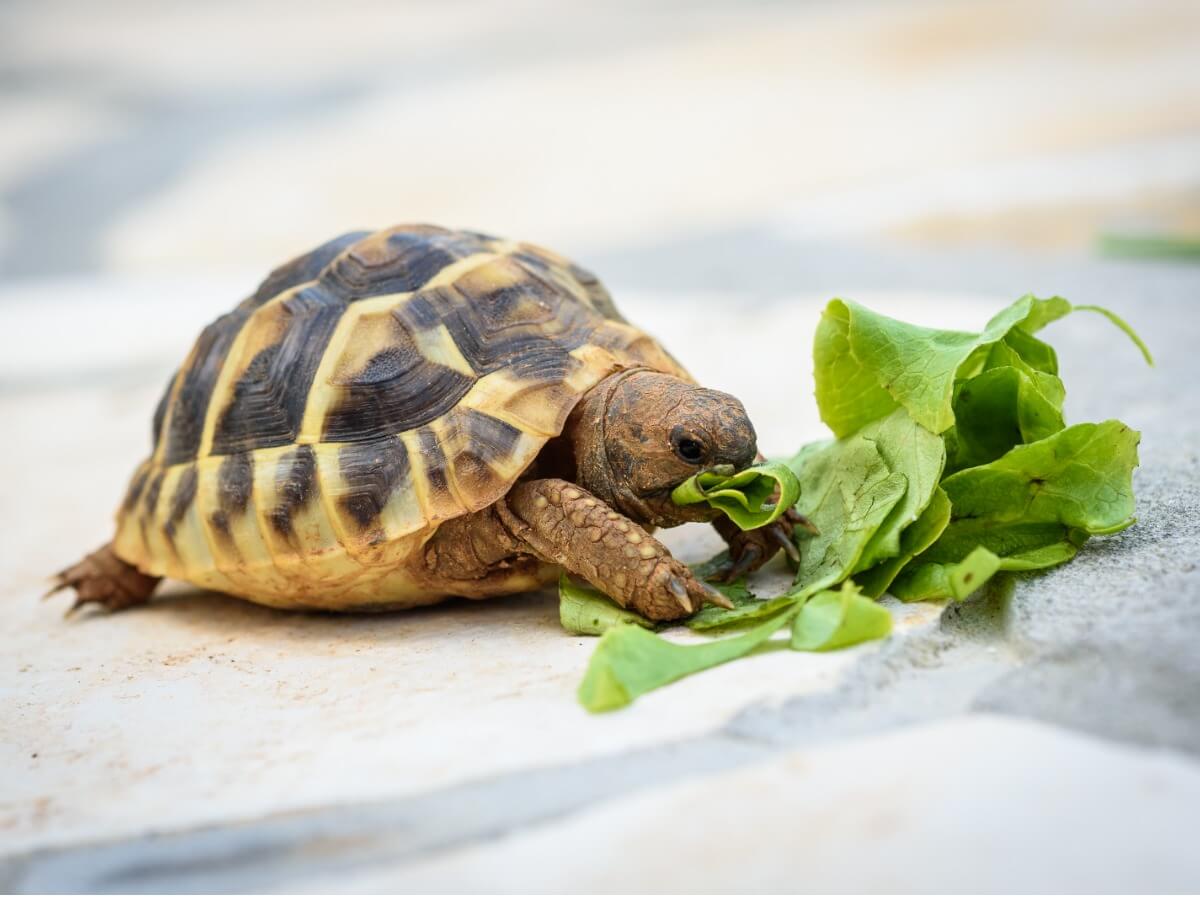What Do Tortoises Eat?


Written and verified by the biologist Samuel Sanchez
Land tortoises are fascinating reptiles. They have a very heavy shell, move slowly, and can outlive a human by far in terms of longevity (some live up to 100 years). However, not all keepers are good candidates for owning a terrestrial chelonian, as they have very specific requirements and need large spaces. In this article, we’re going to focus especially on what tortoises eat.
If you’re considering getting one of these specimens, you may wonder what land tortoises eat in the wild and in captivity. Read on, because here we’re going to answer this question and briefly describe the vital adaptations of terrestrial chelonians.
What are tortoises?
Before describing the diet of these species, we need to be clear about what we generally term as a tortoise. This term is applied to all species belonging to the family Testudinidae, which in turn belongs to the order Testudines. Professional sources estimate that there are about 49 species of tortoises, each with its own characteristics.
These chelonians vary in size and length according to sex, the general health condition of the individual, and the genetics of the species. Giant tortoises, belonging to the Galapagos Islands, carry shells over 1 meter long (3.3 feet) and weigh 100 kilograms (220 pounds). The most common species in terrariums have similar carapaces, with up to 83 centimeters (33 inches) in length and 98 kilograms in weight (216 pounds).
This group of tortoises is characterized by being extremely long-lived. One of the most popular domestic species, Centrochelys sulcata or sulcata tortoise, has an average life expectancy of about 70 years. The record is held by a male of the species Aldabrachelys gigantea with a lifespan of 255 years – no, that’s not a typo!
Tortoises are large, heavy, and very long-lived. Not all keepers can cope with their demanding requirements.

What do tortoises eat in the wild?
The diet of tortoises depends on the species we’re talking about, and the geographical location it’s located in. Because of this, we’re going to give you some specific examples with their full names.
The diet of the Aldabra Giant Tortoise (Aldabrachelys gigantea)
As its name suggests, this species is native to the island of Aldabra (located in the Seychelles). It’s one of the largest chelonians in the world, as the males easily reach 122 centimeters (48 inches) in length and 250 kilos (550 pounds) in weight. Females are slightly smaller, but are still enormous.
These turtles are primarily herbivorous and feed on natural vegetation, such as grasses, leaves, stems, reeds, and fleshy shoots. However, they’re opportunistic animals from a dietary standpoint and sometimes supplement their menu with decaying organic matter. Like most chelonians in dry environments, they drink almost no water and are hydrated by plant intake.

The diet of the Speckled tortoise (Homopus signatus)
The Speckled tortoise, also known as the Speckled Cape tortoise, is considered the smallest terrestrial chelonian in the world. Males rarely exceed 8 centimeters (just over 3 inches) in length and the largest females barely reach 10 centimeters (4 inches). It’s endemic to Africa and is endangered.
Studies have recorded the feeding patterns of this species unequivocally. Thanks to the analysis of the feces of several specimens, it has been found that speckled tortoises feed mainly on vegetables and flowers, although sometimes they also eat insects. The succulent Crassula thunbergiana minutiflora seems to provide most of their hydration.
The diet of the Russian tortoise (Testudo horsfieldii)
This species of chelonian is of medium length, with females measuring 20-22 centimeters (8 to 9 inches) and males 16-18 centimeters (6 to 7 inches). As its name suggests, it’s distributed in the steppe ecosystems of southern Russia, Afghanistan, China, and Pakistan. It’s in a vulnerable situation as far as conservation is concerned.
As in the rest of the cases, these tortoises feed mainly on grasses, leaves, and vegetables. On the other hand, when the dry season arrives, only dehydrated grass is available to them, so they have to supplement their diet with arthropods and excrement from other animals.

What do tortoises eat in captivity?
As you can see, tortoises have a fairly homogeneous diet regardless of their geographical location. They eat mostly plant material, although the varieties consumed do depend on the animal’s environment. In addition, some species are more likely than others to ingest insects and dead animals (mostly depending on the availability of grasses and leaves).
In captivity, the species most commonly kept in homes (especially Geochelone sulcata) follow a diet based on their herbivorous nature. The following points should be kept in mind:
- The basis of a tortoise’s diet must be grass. Therefore, every tortoise will need to have an outdoor facility with constant access to growing grass that is free of pesticides and other chemicals. This will account for up to 90% of their diet.
- Edible flowers, such as geranium, hibiscus, and rose petals, should also be offered.
- If grass isn’t available, other green vegetables can be used. Suitable examples are collard greens, kale, mustard, turnip, and dandelion greens.
- Vegetables shouldn’t make up more than 10-15% of the tortoise’s diet. The best choices are grated raw carrots, pumpkin, sweet potato, broccoli, and corn on the cob.
- Fruits can only be offered occasionally. They contain a lot of sugar and are never recommended as base food.
You should also be careful with vegetables such as spinach, parsley, alfalfa, and other foods with high concentrations of oxalate. The accumulation of this compound can lead to kidney stones and problems with urine production, so it’s best not to give them too much of them. Consult your vet if you have any questions.
Land tortoises are fed every day in captivity. They get most of the water they require to live from grass.

As you can see, a tortoise’s diet depends on many factors, but it’s always predominantly herbivorous. The key to feeding these chelonians in captivity lies in variety and rotation: keep in mind that some of them consume up to 200 different species of herbaceous plants in the wild, so don’t let their nutritional habits stagnate.
All cited sources were thoroughly reviewed by our team to ensure their quality, reliability, currency, and validity. The bibliography of this article was considered reliable and of academic or scientific accuracy.
- Tortoise, Britannica. Recogido a 1 de diciembre en https://www.britannica.com/animal/tortoise
- Dipsochelys dussumieri, Animal Diversity Web. Recogido a 1 de diciembre en https://animaldiversity.org/accounts/Dipsochelys_dussumieri/
This text is provided for informational purposes only and does not replace consultation with a professional. If in doubt, consult your specialist.